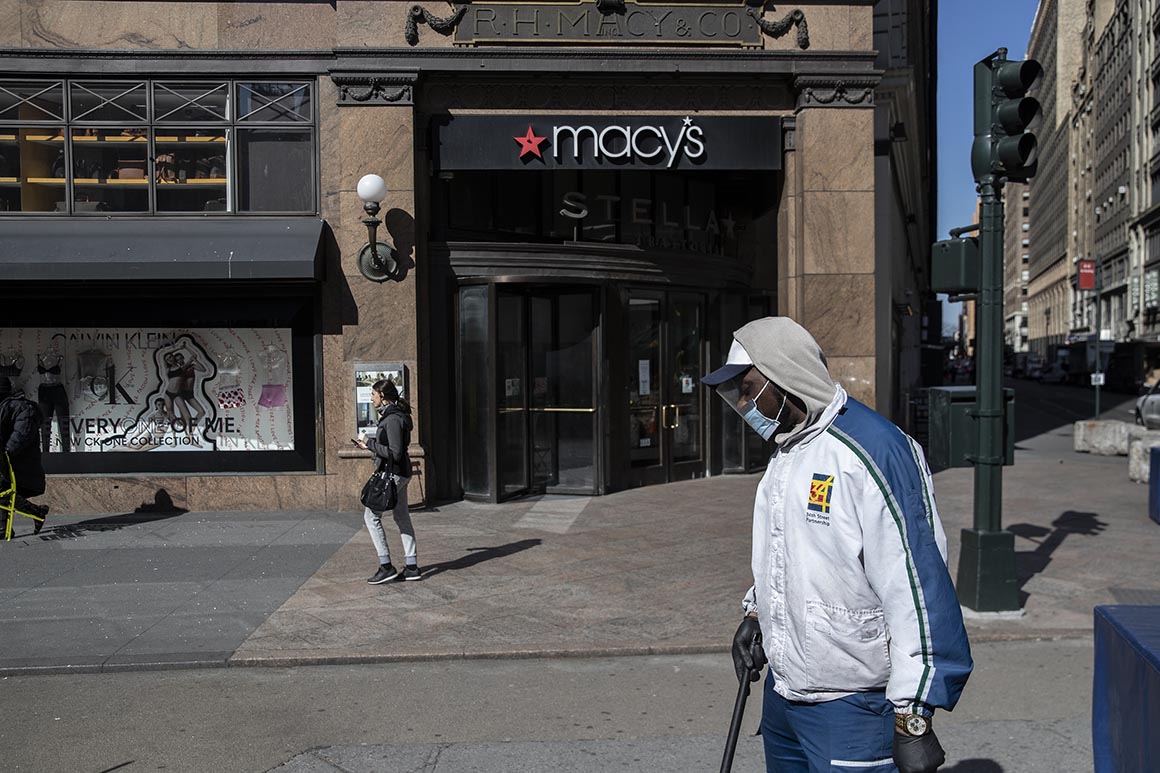
“The overall share of debt that is below investment-grade and we would say is most risky and least directly supported by the Fed is $5 trillion,” said Matt Mish, the head of credit strategy at Swiss bank UBS. That debt, which includes over $1 trillion in risky loans to already highly indebted companies, could grow by as much as $350 billion to $450 billion in the coming months from downgrades, he added.
Lobbyists are working to shape the rules governing the $454 billion loan program for big and medium-sized businesses outlined in the law and backed by the Fed, which Treasury Secretary Steven Mnuchin must publish within a week.
The rules will determine which companies will be able to apply for loans. Businesses with mediocre credit, bad credit or no credit at all — including those whose bond ratings have been downgraded in recent weeks as the coronavirus has ravaged the economy — are worried about being excluded.
Russ Sullivan, another Brownstein Hyatt lobbyist, said he and his colleagues are trying “to persuade Treasury and the Fed, who have enormous flexibility in how to administer this program, to do it broadly.”
Retailers, which have been ordered to close in some states because they’re not considered essential businesses, are among those worried about not making the cut.
“In cases where the eligibility criteria is too narrow for some of America’s best-recognized companies, we ask that your respective agencies exercise discretion to make these programs more widely available,” Matthew Shay, the president and chief executive of the National Retail Federation, wrote on Friday in a letter to Fed Chair Jerome Powell and Mnuchin.
A spokesperson for the Gap declined to comment.
But there would also be a tradeoff if the Fed and Treasury decide to expand the emergency lending programs to businesses with less-than-ideal credit.
The Treasury Department is planning to stretch the $454 billion that Congress set aside for loans to big and medium-sized businesses by working with the Fed, which will chip in much more. Sen. Pat Toomey (R-Pa.) told reporters last week he hoped that together the Treasury Department and the Fed together could lend $2 trillion to $3 trillion to keep corporate America going for several more months.
Because the Fed isn’t set up to take on the risk of companies defaulting, though, the worse the credit of the businesses allowed to apply for loans, the more money Treasury will have to kick in.
And it’s not just the government that will have to parse out the difference between companies that are merely experiencing a cash crunch because of circumstances out of their control, and which companies were ill-prepared for a downturn, such as having loaded up on too much debt.
Firms responsible for rating companies’ debt – including Standard & Poor’s, Moody’s and Fitch – also are having to make fast-moving decisions about whether to downgrade companies based on circumstances that could prove temporary.
Downgrading a company to junk bond status would, for now, make it ineligible for Fed loans. But if a company needs funding from the central bank to refinance its debt, “that’s already by definition a non-investment-grade company,” UBS’ Mish said.
Source: politico.com
See more here: news365.stream






